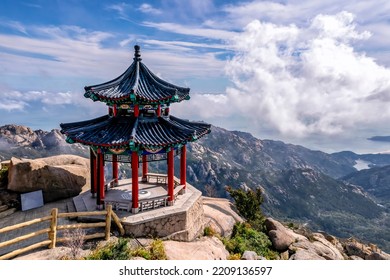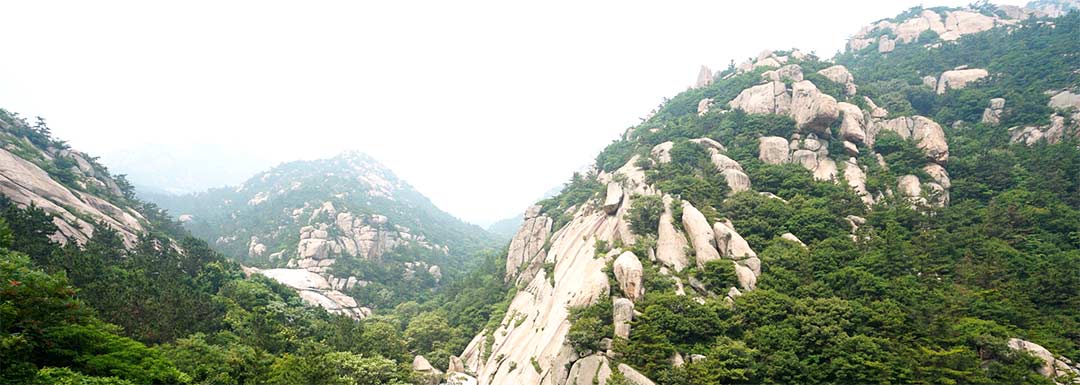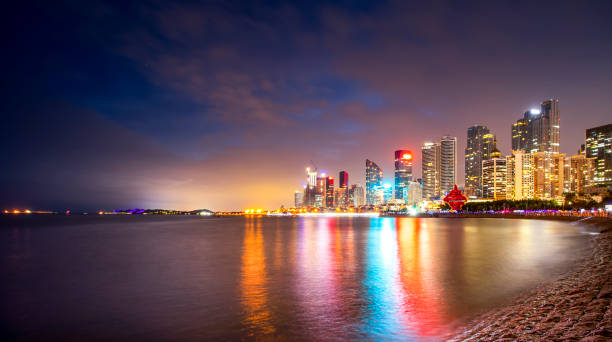Discover the Qingdun Site: A Journey Through Ancient Civilization

An Essential Guide to Visiting Qingdun Site
Nestled within the captivating coastal city of Qingdao, the Qingdun Site (青墩遗址) stands as a remarkable testament to ancient civilization, where the echoes of history resonate through its archaeological treasures. What sets this site apart is the intricate collection of artifacts unearthed from the Neolithic period, offering a rare glimpse into the lives of our ancestors who inhabited this region thousands of years ago. As you wander through this historical gem, you’ll find yourself immersed in tales of a time when the landscape was vastly different and human ingenuity was just beginning to flourish.
In this essential guide, we will delve into everything you need to know to make the most of your visit to the Qingdun Site. From its rich historical significance and the fascinating discoveries made here to practical tips on how to get there, the best times to visit, and nearby attractions you won’t want to miss, this guide ensures that you are well-prepared for an unforgettable experience. Whether you are a history buff, an archaeology enthusiast, or simply a curious traveler, the Qingdun Site promises to be a highlight of your Qingdao adventure.
In This Guide
- An Essential Guide to Visiting Qingdun Site
- The Rich History and Legends of Qingdun Site
- Main Highlights: What You Absolutely Can’t Miss
- Planning Your Visit: A Practical Guide
- Tickets: Prices, Booking, and Tips
- How to Get There: A Complete Transportation Guide
- Local Cuisine and Accommodation Nearby
- Frequently Asked Questions
- Final Thoughts on Your Trip
The Rich History and Legends of Qingdun Site
Unveiling the Layers of Time: The History of Qingdun Site
Nestled in the picturesque coastal city of Qingdao, the Qingdun Site (青墩遗址) is a treasure trove for history enthusiasts and adventurers alike. This archaeological gem reveals stories of ancient civilizations that once thrived in this region, offering insights into their culture, lifestyle, and the legends that have been passed down through generations.
The Dawn of Civilization: Neolithic Beginnings
Dating back to the Neolithic period, the Qingdun Site is believed to have been established around 5,000 years ago. It was during this time that the area began to flourish as a settlement, primarily inhabited by agrarian communities. Archaeologists have unearthed remnants of pottery, tools, and other artifacts that provide a glimpse into the daily lives of these early inhabitants. The craftsmanship exhibited in the pottery suggests a society that valued artistry alongside functionality.
The Bronze Age: A Flourishing Culture
As time progressed into the Bronze Age, the Qingdun Site evolved into a thriving community. This era saw the development of metallurgy, agriculture, and trade, significantly enhancing the quality of life for its residents. Evidence of bronze tools and weapons have been found, indicating that the people of Qingdun were skilled artisans and warriors. It is during this period that legends began to emerge, intertwining the lives of the inhabitants with the mystical elements of nature.
One popular tale recounts how the locals revered a celestial being known as “Jin Wu,” who was believed to have descended from the heavens to bless the land with prosperity. The residents would hold festivals in his honor, celebrating the bountiful harvests and successful fishing seasons that the site provided.
The Warring States Period: A Time of Conflict and Change
The Qingdun Site’s significance continued to grow during the Warring States Period (475-221 BC), a tumultuous time marked by fierce battles and shifting alliances among various regional states. As a strategic location, it became a focal point for military engagements, with fortifications constructed to protect the inhabitants.
Legends from this era speak of a courageous warrior named “Zheng Yi,” who defended the community against invading forces. According to folklore, he was gifted with extraordinary strength by the spirits of the mountains, enabling him to repel enemies and safeguard his people. Zheng Yi’s bravery is still celebrated in local tales, serving as a symbol of resilience and unity.
The Imperial Era: Cultural Exchange and Growth
The Qingdun Site continued to play a significant role during the Imperial Era, notably under the influence of the Han Dynasty (206 BC–220 AD). This period was characterized by cultural exchange, trade, and advancements in agriculture and technology. The site became an essential hub for merchants and travelers, connecting them to broader trade routes.
During this time, legends flourished, one of which tells of a merchant who stumbled upon a hidden cave beneath the site. Inside, he discovered ancient scrolls containing profound wisdom and knowledge that had been lost for centuries. He returned to the village, sharing the teachings, which helped the community thrive and expand its influence throughout the region.
Modern Discoveries: A Window into the Past
In recent decades, archaeological excavations at the Qingdun Site have unearthed a wealth of artifacts, including ceramics, bronze tools, and ancient tombs. These discoveries have not only shed light on the historical significance of the site but have also fueled ongoing research and interest among scholars and tourists alike.
Today, the Qingdun Site stands as a testament to the resilience and creativity of its ancient inhabitants. It invites visitors to explore its rich history and engage with the legends that breathe life into the past. Whether you are a history buff or a curious traveler, the tales woven into the fabric of Qingdun promise an unforgettable journey through time.
An Invitation to Explore
As you wander through Qingdao, take a moment to visit the Qingdun Site. Engage with the stories that echo through the ruins, and allow the legends of brave warriors, celestial beings, and ancient wisdom to captivate your imagination. It is a place where history and myth intertwine, offering a unique glimpse into the lives of those who came before us.

Qingdun Site.
Main Highlights: What You Absolutely Can’t Miss
The Ancient Relics of Qingdun
Step into the past at the Qingdun Site (青墩遗址), an archaeological treasure trove nestled in the scenic outskirts of Qingdao. This site offers a rare glimpse into the life and culture that flourished in ancient China. Here are the must-see highlights that you simply cannot miss:
1. The Main Burial Grounds
Explore the heart of the Qingdun Site, where ancient burial mounds tell stories of the people who once inhabited this region. These meticulously excavated graves provide invaluable insights into burial practices, social hierarchies, and the spiritual beliefs of the time. As you wander through, take a moment to reflect on the lives of those who came before.
Tip: Guided tours are available, providing in-depth knowledge about the significance of the site, so consider joining one to enhance your experience.
2. The Unique Pottery Collection
Don’t miss the extraordinary pottery artifacts discovered at Qingdun. Ranging from everyday utensils to beautifully crafted ceremonial pieces, these artifacts showcase the artistic skills of their creators. The pottery is often adorned with intricate designs, reflecting the aesthetics and functionality valued by ancient communities.
Tip: Bring a camera! While photography may be restricted in certain areas, capturing the essence of these ancient artifacts is a must. Check for specific guidelines upon your arrival.
3. The Ancient Tools Exhibit
Marvel at the collection of stone and bronze tools that offer a glimpse into the technological advancements of the time. These tools reveal how ancient inhabitants adapted to their environment, showcasing their ingenuity in agriculture, craftsmanship, and daily living.
Tip: Spend time reading the descriptions near the artifacts; they provide a fascinating context that enriches your understanding of how these tools were used.
4. The Ritual Sites
Venture to the ritual sites within the Qingdun complex, where ancient ceremonies were conducted. These spaces are often marked by distinctive stone formations and altars, hinting at the spiritual practices that were integral to the community. The atmosphere here is both serene and reflective, making it a perfect spot for contemplation.
Tip: If you’re interested in spirituality or ancient rituals, take notes during your visit; they may inspire personal reflections or even creative projects later.
5. The Interpretation Center
Before or after your exploration, be sure to stop by the Interpretation Center. This facility offers informative displays, multimedia presentations, and knowledgeable staff to assist with any questions. It’s an excellent way to gain a deeper understanding of the significance of Qingdun and its artifacts.
Tip: Check the schedule for any special lectures or workshops during your visit; these can provide unique insights and enhance your overall experience.
6. The Scenic Overlook
After soaking in the history, take a leisurely walk to the scenic overlook nearby. This vantage point offers stunning views of the surrounding landscape and the bay, allowing you to appreciate the natural beauty that has existed alongside human history for centuries.
Tip: Bring a picnic to enjoy at the overlook! This serene setting makes for a lovely break amidst your explorations.
7. Nearby Nature Trails
Finally, take advantage of the beautiful nature trails that wind around the Qingdun Site. These paths not only provide an opportunity to connect with nature but also lead to other historical spots in the area. A leisurely hike allows you to appreciate the flora and fauna that have existed alongside ancient cultures.
Tip: Wear comfortable shoes and bring water; the trails can be longer than they appear, and staying hydrated is key to an enjoyable hike.
Visiting the Qingdun Site is not just a journey through ancient history; it is an immersive experience that invites you to connect with the past while enjoying the stunning natural surroundings of Qingdao. Don’t forget to take your time and soak in all that this remarkable site has to offer!

Qingdun Site.
Planning Your Visit: A Practical Guide
Best Time to Visit
The ideal time to explore the Qingdun Site is during the late spring (April to June) and early autumn (September to October). During these months, the weather is pleasantly warm, with temperatures ranging from 18°C to 25°C (64°F to 77°F), making it perfect for outdoor exploration. Avoid the peak summer months, as temperatures can soar, and the site may become crowded with tourists.
Recommended Itinerary
Day 1: Arrival in Qingdao
– Morning: Arrive at Qingdao Liuting International Airport and check into your accommodation.
– Afternoon: Head to the Qingdun Site to explore the ancient ruins and learn about its historical significance.
– Evening: Enjoy dinner at a local restaurant on Yunxiao Road, known for its excellent Shandong cuisine.
Day 2: Surrounding Attractions
– Morning: Visit Zhan Qiao Pier for picturesque views and a chance to take photos.
– Afternoon: Spend some time at Xiaoyushan Park, where you can relax and enjoy the scenic landscapes.
– Evening: Sample fresh seafood at Haidao Seafood Restaurant, a local favorite.
Photography Tips
- Golden Hour: The best time for photography is during the golden hour, just after sunrise and before sunset, when the light is soft and warm.
- Wide-Angle Lens: Bring a wide-angle lens to capture the expansive views of the site and surrounding landscapes.
- Details Matter: Don’t forget to take close-up shots of intricate carvings and artifacts found at the site to showcase the craftsmanship of ancient builders.
- Be Mindful of the Weather: Clear days will provide the best visibility, so check the forecast and plan your visit accordingly.
What to Wear
- Comfortable Footwear: Since exploring the Qingdun Site involves walking over uneven terrain, wear sturdy and comfortable shoes.
- Layers: Given the unpredictable weather, dressing in layers will help you adjust to varying temperatures throughout the day.
- Sun Protection: A wide-brimmed hat, sunglasses, and sunscreen are essential, especially during the warmer months when the sun can be intense.
Insider Tips
-
Early Bird Advantage: Arrive at the Qingdun Site early in the morning to beat the crowds and enjoy a more tranquil atmosphere.
-
Local Guides: Consider hiring a local guide who can provide deeper insights into the history and significance of the site and its artifacts.
-
Nearby Attractions: Don’t miss the nearby Han Dynasty Brick Museum, which showcases ancient art and culture. It’s a short drive from the Qingdun Site.
-
Cultural Experiences: Participate in local cultural experiences, such as traditional tea ceremonies or cooking classes, to enrich your visit.
-
Public Transport: Utilize public transportation to reach the site, as it’s both affordable and convenient. The bus and subway systems are efficient and can help you navigate the city easily.
With this practical guide, you’re now equipped to make the most of your visit to the Qingdun Site and its surrounding attractions. Enjoy your journey into history!

Qingdun Site.
Tickets: Prices, Booking, and Tips
Visiting the Qingdun Site (青墩遗址) is a unique opportunity to immerse yourself in the ancient history of Qingdao. To ensure a smooth experience, here’s a comprehensive guide to ticketing, including prices, what’s included, and booking tips.
Ticket Information for Qingdun Site
| Ticket Type | Price (CNY) | Includes |
|---|---|---|
| Adult Admission | ¥50 | Entrance to the site, access to exhibits |
| Student Admission | ¥25 | Entrance to the site (valid ID required) |
| Group Admission | ¥40 | Entrance for groups of 10 or more |
| Audio Guide Rental | ¥20 | Audio guide available in multiple languages |
Booking Your Tickets
Tickets to the Qingdun Site can be purchased at the entrance, but it’s highly recommended to book in advance, especially during peak tourist seasons. Here’s how to secure your tickets:
-
Online Booking: Visit the official Qingdun Site website or reputable travel platforms. Many sites offer a straightforward online booking system that allows you to select your date and type of ticket.
-
Mobile Apps: Popular Chinese travel apps often feature ticket booking for attractions. Apps like Trip.com or Ctrip provide English-language options and can simplify the booking process.
-
Travel Agencies: Consider contacting local travel agencies in Qingdao. They can assist you with ticket purchases and may offer additional services like guided tours.
Tips for Booking
-
Book Early: To avoid disappointment, especially during holidays or weekends, secure your tickets as early as possible.
-
Check Cancellation Policies: If booking online, familiarize yourself with cancellation policies in case your plans change.
-
Consider Guided Tours: For a richer experience, look for guided tours that include ticket prices, as they often provide insightful commentary and logistics.
By planning ahead and ensuring your tickets are secured, you can fully enjoy the wonders of the Qingdun Site and make the most of your historical adventure in Qingdao!
How to Get There: A Complete Transportation Guide
From the Nearest Major City: Qingdao
By Air
If you’re arriving internationally, the nearest major airport is Qingdao Liuting International Airport (TAO). It has frequent flights connecting to major Chinese cities like Beijing and Shanghai, as well as international routes from locations such as Germany, Hong Kong, South Korea, and Japan. Once you land, the Qingdun Site is roughly 20 miles (32 km) from the airport. You can take a taxi for about ¥130 (approximately $20), or opt for the airport shuttle bus, which costs around ¥20 (about $3).
By Train
Qingdao is well-connected by high-speed rail, making it easy to travel from other major Chinese cities. From Beijing, you can reach Qingdao in approximately 4-5 hours for around ¥275 (around $40). If you’re coming from Shanghai, the journey is about 8-9 hours and costs around ¥550 (approximately $85). Once you arrive at Qingdao Railway Station, you can catch a taxi or use public transportation to reach the Qingdun Site.
By Bus
Buses also offer a reliable means of transport throughout Shandong Province. From Beijing, a long-distance bus to Qingdao will take about 8-10 hours and costs around ¥231 (approximately $35). After arriving in Qingdao, you can take local buses or taxis to the Qingdun Site.
By Car
Driving to Qingdao is straightforward thanks to its excellent highway system. From Beijing, you can take the G20/G25 highways, which will take you north toward Qingdao. The drive typically takes around 6-7 hours, depending on traffic. If you’re coming from Shanghai, the G15 highway runs south along the coast, with a travel time of approximately 12-14 hours. Note that tolls apply on these highways, so be prepared for additional costs.
Getting Around the Scenic Area
Once you arrive at the Qingdun Site, navigating the surrounding area is relatively simple. Here are some tips for getting around:
Walking
The Qingdun Site is best explored on foot, as it allows you to fully appreciate the historical significance and the natural beauty of the area. The site is designed for easy pedestrian access, with well-marked paths leading to key points of interest.
Public Transportation
If you wish to explore beyond the Qingdun Site, Qingdao has a comprehensive public transportation system. Buses and taxis are readily available. Local bus fares are quite economical, usually around ¥2-4 (approximately $0.30-$0.60) per ride.
Bicycles
For a more leisurely pace, consider renting a bicycle. Several bike-sharing options are available throughout Qingdao, allowing you to explore the area at your own speed. Rates typically start at ¥1-2 (about $0.15-$0.30) per hour.
Taxis
Taxis are a convenient option if you’re traveling with a group or prefer not to navigate public transportation. Basic fares start at around ¥14 (approximately $2.10), with additional charges based on distance traveled. Ridesharing apps like Didi are also available, providing a modern alternative to traditional taxi services.
Conclusion
Visiting the Qingdun Site is not only a journey to a significant historical location but also an opportunity to immerse yourself in the culture and beauty of Qingdao. With various transportation options available, reaching this fascinating site is both accessible and convenient, ensuring a memorable experience for all travelers.

Qingdun Site.
Local Cuisine and Accommodation Nearby
When exploring the Qingdun Site (青墩遗址), immerse yourself in the culinary delights and comfortable accommodations that Qingdao has to offer. This vibrant city, rich in history and coastal charm, is renowned for its delectable Shandong cuisine and a variety of lodging options to suit all tastes and budgets.
Local Cuisine
-
Dumplings (饺子, jiǎozi)
A staple in Chinese cuisine, Qingdao’s dumplings are a must-try. Typically filled with a mix of minced meat and vegetables, these delightful pockets of flavor can be found at local eateries like Sanheyuan on Ningxia Road, where you can enjoy a plate for around ¥25. -
Seafood (海鲜, hǎixiān)
Given its coastal location, Qingdao boasts some of the freshest seafood in the region. Head to Haidao Seafood Restaurant on Yunxiao Road, where dishes start at approximately ¥80. Indulge in grilled squid, clam soup, or the local specialty, spicy crab, perfectly paired with a cold Tsingtao beer. -
Sweet and Sour Carp (糖醋鲤鱼, tángcù lǐyú)
A signature dish of Shandong cuisine, this dish features a whole carp fried to perfection and then coated in a tangy sweet and sour sauce. It’s often garnished with colorful vegetables, providing a feast for both the eyes and the palate. -
Braised Pork Belly (红烧肉, hóngshāo ròu)
This rich and savory dish is a favorite among locals. The pork belly is slow-cooked in a mixture of soy sauce, sugar, and spices until tender and flavorful. It’s typically served with steamed rice and pickled vegetables, making for a comforting meal.
Accommodation Nearby
-
Luxury:
InterContinental Qingdao
Situated along the picturesque coastline, this five-star hotel offers stunning views of the sea and is known for its impeccable service and luxurious amenities. Enjoy fine dining, a spa, and spacious rooms designed for comfort and relaxation. -
Boutique:
The Loft Design Hotel
For a more unique experience, The Loft Design Hotel combines contemporary design with local culture, featuring art-inspired decor and cozy rooms. Located close to the city center, it’s perfect for travelers seeking a blend of style and comfort. -
Budget:
Qingdao Hi Inn
Offering affordable rates and clean accommodations, Qingdao Hi Inn is a great choice for budget-conscious travelers. The hotel provides essential amenities and easy access to public transportation, making it convenient for exploring the city.
Whether you’re indulging in local delicacies or unwinding in one of Qingdao’s charming accommodations, the area surrounding the Qingdun Site promises an enriching travel experience. Enjoy the flavors and hospitality that make this coastal city truly special!

Qingdun Site.
Frequently Asked Questions
Frequently Asked Questions about Qingdun Site (青墩遗址)
1. Is Qingdun Site suitable for children and the elderly?
Yes, Qingdun Site is quite accessible for both children and the elderly. The paths are generally well-maintained, making it easy for visitors of all ages to explore the site. However, as with any historical site, some areas may require a bit of walking, so it’s advisable to wear comfortable shoes.
2. Are there English signs available at Qingdun Site?
Yes, there are English signs throughout Qingdun Site, which provide valuable information about the history and significance of the artifacts and structures. This makes it easier for international travelers to appreciate the site without needing extensive language skills.
3. How much time should I plan to spend at Qingdun Site?
On average, visitors spend about 1.5 to 2 hours at Qingdun Site. This allows enough time to explore the exhibits, read the informational signs, and take photographs. If you are particularly interested in archaeology or history, you may wish to allocate more time.
4. Are there facilities such as restrooms or food options nearby?
Yes, there are restroom facilities available at Qingdun Site, as well as a small café where you can grab a light snack or drink. However, for a more extensive meal, it’s advisable to explore dining options in nearby Qingdao after your visit.
5. Is there an entrance fee for Qingdun Site?
Currently, there is no entrance fee to visit Qingdun Site, making it an affordable destination for travelers. However, it’s always wise to check for any updates or changes in the future.
6. What is the best time of year to visit Qingdun Site?
The best time to visit Qingdun Site is during late spring (May to June) or early autumn (September to October) when the weather is pleasantly warm and ideal for outdoor exploration. Summer can be quite hot, while winters can be chilly.
7. Can I take photographs at Qingdun Site?
Yes, photography is allowed at Qingdun Site, so feel free to capture the stunning views and ancient artifacts. Just be mindful of any signs indicating restricted areas where photography may not be permitted.
8. How can I get to Qingdun Site from Qingdao’s city center?
Qingdun Site is conveniently located within Qingdao, making it accessible by public transportation or taxi. A short taxi ride from the city center should take around 15-20 minutes. Alternatively, you can check local bus routes that connect to the site for a more economical option.
Final Thoughts on Your Trip
As your journey to the Qingdun Site comes to a close, take a moment to reflect on the layers of history and culture you’ve uncovered in this remarkable location. From the echoes of ancient civilizations that once thrived here to the stunning coastal vistas that greet you at every turn, Qingdun offers a unique blend of exploration and relaxation.
Whether you’ve delved into the rich archaeological finds, savored local culinary delights, or basked in the sun on the pristine beaches of Qingdao, each experience adds to a tapestry that beautifully illustrates this vibrant region’s past and present.
As you leave, let the spirit of Qingdun inspire you to seek out stories in every corner of the world. Embrace the adventure that lies ahead, knowing that the memories and insights gained from this trip will linger long after you’ve returned home. Safe travels, and may your next journey be just as enriching!